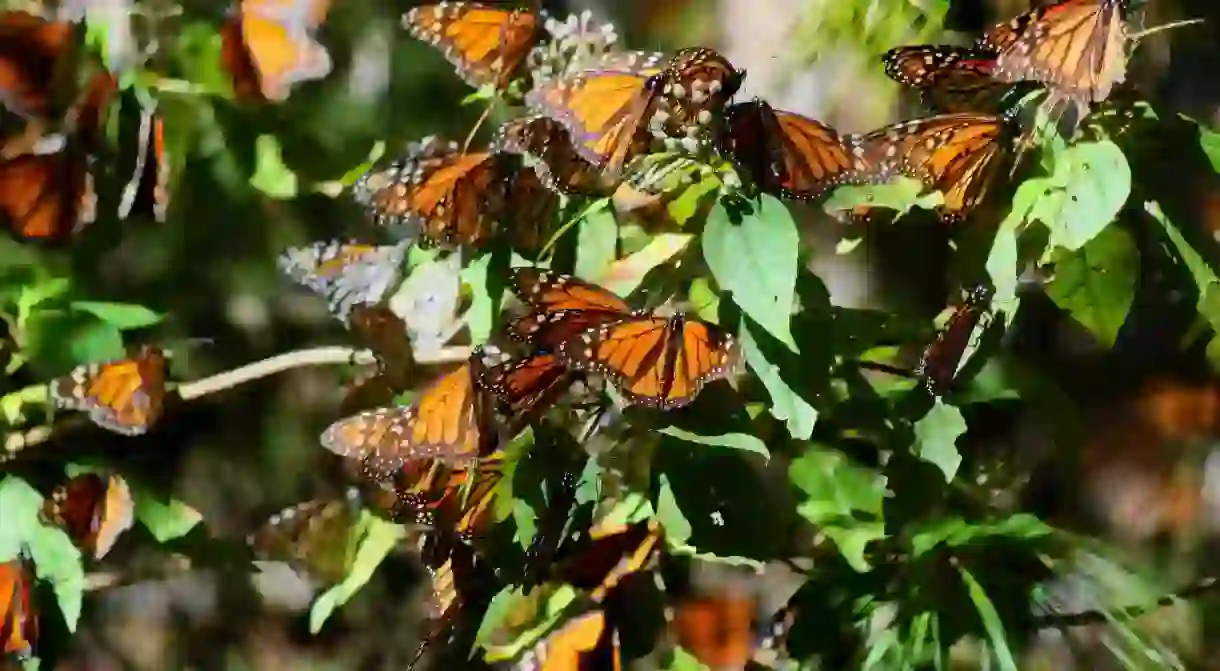Your Morning Avocado is Killing This Beautiful Endangered Species

Follow a few food bloggers on Instagram and you will find the world’s latest obsession everywhere: avocados. While full to the brim with potassium, heart-healthy fats and fiber, the avocado’s effect on the world is not always net positive, especially when it comes to avocados from Mexico. This newest foodie trend is threatening an ancient yearly migration of monarch butterflies.

Each year, millions of monarch butterflies migrate from their summer mating and feeding grounds in the United States and Canada and make the arduous 3,000-mile (4,828-kilometer) journey south to central Mexico where their winter roosting forests are.
If you visit the monarch sanctuary in Michoacan, Mexico, during January, February, and March, you can experience the marvel of seeing clouds of tiny winged creatures floating to the ground during the day looking for food and huddling together at night in the tops of the oyamel fir trees. The butterflies wait until the first rays of the morning sun hit the outer layers of their clusters, and then drift away one by one as they start to warm up. It’s a breathtaking sight, and one that is in danger of disappearing for good.

That’s because Michoacan is not just known for its butterflies; it’s also known as the greatest source of avocado imports into the United States. With the rise of demand, prices have been shooting up. For Mexican farmers, many of whom were once corn farmers who were finding it impossible to compete with subsidized agricultural imports from the U.S., avocado farming has been a boon to their pocketbooks.

In Michocan, at the base of those same forests that serve as wintering grounds for the monarch butterflies, many pine and oak trees are being cut down in favor of avocado trees. To avoid the notice of federal officials, some farmers plant avocado trees among the pines and slowly thin the forest out as the trees get older. Just this month, illegal avocado groves were discovered west of Mexico City and close to butterfly sanctuaries.

This deforestation and replacement of pine and oak with avocado trees creates problems on many levels. These lower sections of the forests are needed for thermal cover and protection of the monarchs’ roosting grounds. The avocado trees also use significantly more water and have much shallower roots than the forest ecosystem that they replace. This means that the water that was once filtered by the pines and oaks is no longer being filtered, and that avocado farming is quickly reducing the area’s water supply. Then there is the problem of the pesticides and insecticides that are used on the trees filtering into ground water and endangering other flora and fauna in the area.
There are programs in place to help preserve the monarch habitat, and many farmers are working to reforest the areas near their farms. Cooperatives such as this one are working to get certified as sustainable and organic and refuse to except members who have not been farming for at least six years – about the time the latest wave of deforestation started.

The case of the monarchs versus the avocado farmers is another classic example of the conflicts that often exist between market demand, environmental protection, and the economic needs of farmers and producers. A just solution will most likely be a combination of reduced demand and higher consciousness among consumers, alternative income-producing projects for local farmers, and a widening range of places (in Mexico and in other countries) that can grow avocados in areas that don’t endanger one of the world’s most incredible insects.
Food with a view: check out the best rooftop restaurants in Mexico City.













